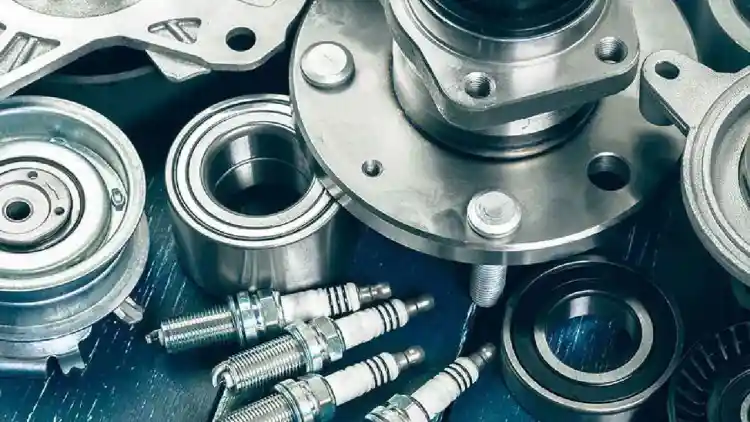- Key Steps for Smart Car Buyers
- Common Mistakes to Avoid
- The New vs. Used Debate
- Frequently Asked Questions
Buying a car can feel like a big decision, but it doesn’t have to be overwhelming. For car buying people around the world, having a clear step-by-step plan is key. This guide will simplify the process, help you navigate every stage of the purchase, and make sure you drive away with a car that fits your needs and budget perfectly.
Key Steps for Smart Car Buyers
The car buying journey doesn’t have to be stressful. Follow these steps to make a smarter, more informed choice when selecting a vehicle.
Understanding Your Needs and Setting a Budget
Before you start browsing cars, think about how the vehicle will fit into your life:
What’s the purpose of the car? Will it be for daily commuting? Family transportation? Business use? Decide the primary usage.
What features can’t you live without? Do you need advanced safety systems like automatic braking or blind-spot monitoring? Are you looking for roomy seating, fuel savings, or perhaps hybrid or electric technology?
How much can you afford? Think beyond the sales price. Budget for other costs:
The car loan or monthly installment.
Insurance premiums, which can vary depending on your driving record and the vehicle.
Fuel costs, whether it’s gas, diesel, or electricity.
Researching Cars That Match Your Needs
Take the time to gather details about cars that align with your lifestyle and budget:
Use trusted automotive websites or apps to compare models, features, and real-world reviews from other owners.
Look into safety credentials like crash-test ratings. More secure cars often lead to peace of mind and lower insurance costs.
If considering a secondhand car, research the market value through platforms offering price guidance.
Choosing a Payment Option
Understanding how you will pay for the car is vital.
Paying in full upfront:An excellent choice if you can afford it. You avoid any loan interest costs.
Financing:Before heading to a dealership, get pre-approved for a loan. Compare banks and credit unions to find a low-interest rate.
Leasing:Perfect for those who want a newer model every few years but keep in mind there are mileage restrictions.
Visiting Dealerships and Test Driving
Seeing and driving potential cars is an important part of the process:
Test drive wisely:Drive on highways, city streets, and less maintained roads. Ensure the car handles well, feels comfortable, and offers good visibility.
Ask questions:Don’t shy away from seeking answers on things like maintenance schedules or repair costs.
Don’t rush:Evaluate several cars, even if one stands out right away. This will give you better options and a foundation for comparison.
Sealing the Deal
When you find the car that’s right for you, focus on the following to finalize the deal smoothly:
Double-check the contract:Ensure every detail, including pricing, financing terms, and warranties, is correct and as agreed.
Inspect the car one more time:Look for scratches, unusual sounds, or anything you weren't informed about.
Confirm trade-in value:If you’re exchanging your old vehicle, make sure the value matches what was initially discussed.
Common Mistakes to Avoid
Even the savviest buyers can make errors. Make sure to avoid these:
Not test driving the car or only testing it briefly.
Underestimating the total cost by only focusing on monthly payments.
Relying solely on dealership financing without comparing other offers.
Accepting unnecessary extras or fees due to sales pressure.
Buying without a clear understanding of a used vehicle's history.
The New vs. Used Debate
Not sure whether to buy new or used? Here’s a quick comparison to help you decide:
Factor | New Car | Used Car |
|---|---|---|
Price | Typically more expensive | Cheaper upfront |
Depreciation | Faster during the first few years | Slower after initial years |
Technology | Latest features | Basic or older tech |
Condition | Perfect, with warranty | Condition varies, inspection needed |
Customization | Pick your features | Limited to existing inventory |
Frequently Asked Questions
Is now the right time to buy an electric or hybrid car?
Electric and hybrid cars offer lower running costs and are better for the environment. However, consider your area’s charging station availability and whether you’ll take long trips often. If infrastructure in your region is sufficient, it could be a great time to make the switch.
How can I make sure I’m not buying a faulty used car?
Always request a vehicle history report. Look for records of previous accidents, servicing, and mileage tampering. Additionally, have the car inspected by a trusted mechanic who can confirm it’s in proper working condition.
How much room is there for negotiation on the price?
The ability to negotiate depends on inventory levels, demand for the model, and timing (like season-end sales). Research ahead of time to understand the average transaction price for the specific car you’re interested in.
By following the steps in this guide, car buying people can feel confident and prepared. Whether you’re purchasing new or used, taking your time and planning ahead can make your car buying experience stress-free and satisfying!
Read More:
Mitsubishi Galant:The Enduring Sedan Loved by Drivers Worldwide
Automall UAE:Your Car Buying Experience Made Easy
Toyota bZ4X:Your Essential Guide to the Popular Electric SUV













